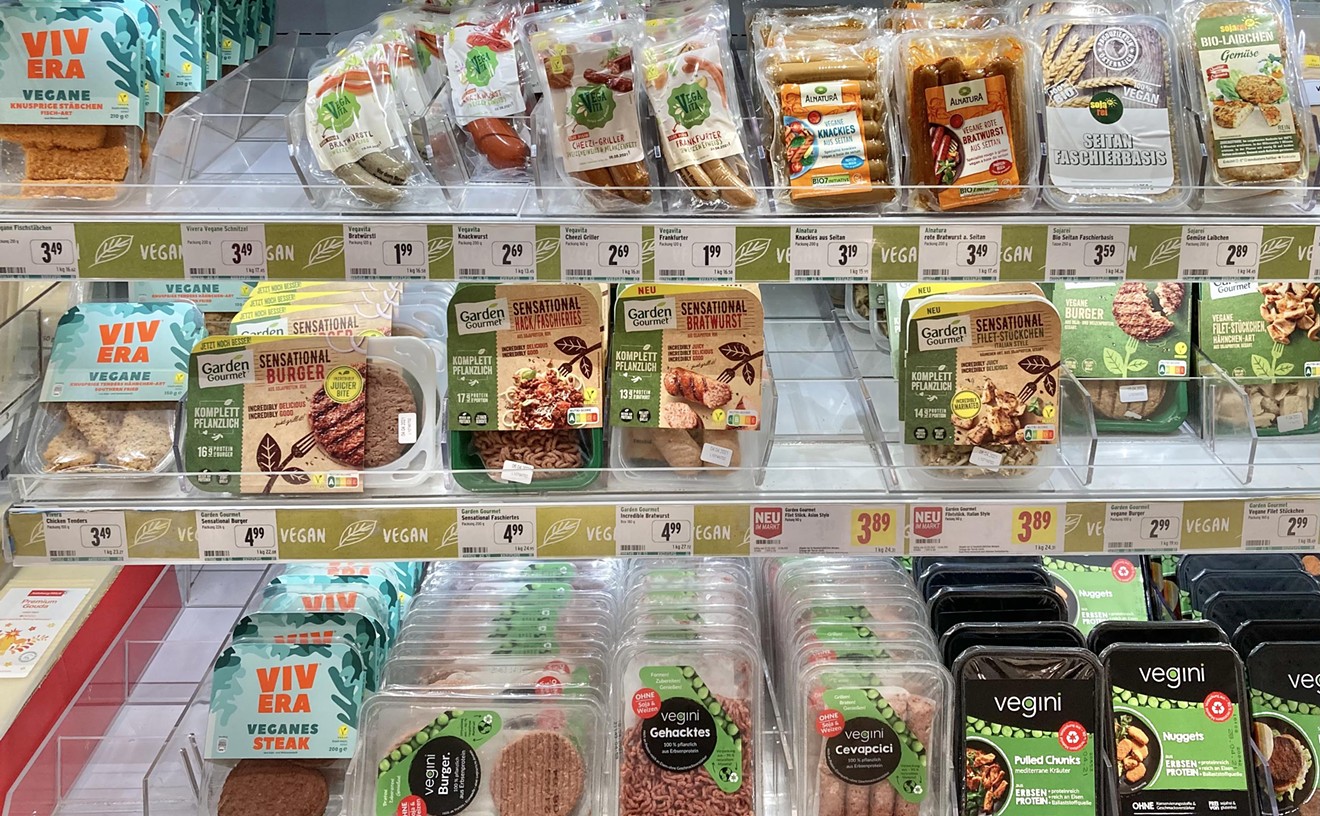Is it a fad or here to stay? In the month since they debuted in a New York City bakery, cronuts have established their own black-market. The LA Times issued an open letter to their local pastry chefs to help relieve the city of "cronut fever envy."
See also: - 10 Favorite Bakeries in Metro Phoenix
Despite a pending trademark by cronut mastermind Dominique Ansel, whose Soho bakery is the site where the original was created and is baked every day, copycats have been popping up across the world under names like Doissant, Kronut, Doughsánts Croughnuts, and the literal Croissant Doughnut.
As the cronut makes cameos under assumed names in bakeries everywhere, I've been wondering how hard and what combination these cronuts are made of. Do I use doughnut dough and laminate butter into it? Danish dough with lamination? Or straight up croissant dough?
I chose croissant dough, despite the fact that Ansel's dough is a combination of doughnut and croissant dough. Ansel's croissant process takes 3 days, and so does my croissant dough.
Day 1: Make the croissant dough. Croissant dough is considered relatively lean dough, despite the use of whole milk. It is not enriched dough, like brioche in that it does not have the addition of eggs or butter in the actual dough. When finished, the croissant dough is placed on a sheet pan in the refrigerator to relax and chill overnight.
Day 2: Laminate the dough. The process of lamination, folding butter into the dough so that it creates many layers, is a beast of a task, especially in the heat of Arizona summer.
Taking a pound of butter and some flour, the butter is beaten into a rectangle, while still cold, adding some flour as your manipulate the butter. If it becomes too warm, it's placed in the freezer briefly. If it's too cold when it emerges, it is allowed to warm up a bit.
Once the flour is incorporated and the size set, the butter is placed in the freezer to chill again for a bit. Then comes lamination time. Place in the center of the dough, the dough is then folded, like a book to enclose the butter brick. The dough is folded up and the first to "turns" are performed. Muscles ache and pinch at this part, working the stubborn dough into shape. The dough is wrapped and placed in the freezer for 1 hour to allow the dough time to relax and to allow the butter to chill again.
The next turn is performed and the dough is then wrapped and placed back into the freezer for another hour. A third time, the dough is manipulated, then wrapped and placed back in the freezer, this time, for a night's rest.
Day 3: Pull dough from the freezer dark and early, and place it in the refrigerator. Returning in the afternoon, the dough is ready to be rolled out, and cronuts cut. The cronuts are proofed for about an hour (until doubled in size), then fried in canola oil. Once drained and cooled slightly, the cronuts are dredged in sugar, filled with a vanilla pastry cream, and drizzled with some peach glaze.
When you bite into a warm cronut, it is crunchy on the outside and soft layers inside. The sugar crust is rough and the interior flakes apart in the gnash of the teeth. Cool cream and a peachy glaze appear to calm the rich butter dough, but the whole thing in sinfully wrong. Personally, I love the cronut simply tossed in cinnamon sugar. It is crisp, chewy, a touch sweet, and warm from the cinnamon.
Since I don't have a super fancy expensive laminator for my croissant dough, I don't think I'm going to be going into the cronut business anytime soon. While I don't have an original to compare to, and I have no plans on waiting on line for hours in New York City to get one, I think my homemade cronuts turned out pretty golden and delectable. If you aren't able to wait on line or buy a black-market cronut for upwards of $35 (plus $10 delivery fee in the NYC metro area), make some at home -- to be eaten while jogging on your treadmill.
And here's our video take on cronut making:
Rachel Miller is a pastry chef and food writer in Phoenix, where she bakes, eats, and single-handedly keeps her local cheese shop in business. You can get more information about her pastry at www.pistolwhippedpastry.com, or on her blog at www.croissantinthecity.com.










